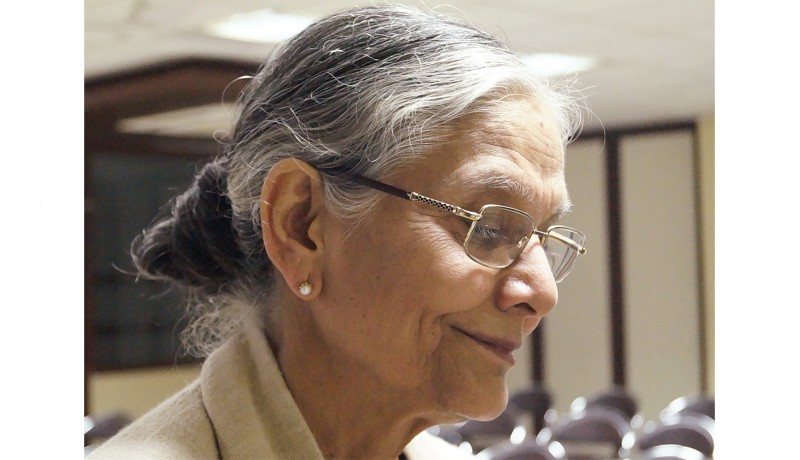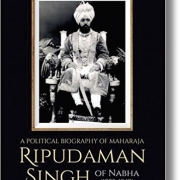
Etcetera

Serendipity has always played a role in determining the course of history; now it has made sure a ‘rebel Maharaja’ takes his rightful place in the annals of India’s rich and glorious past. A new book—A Political Biography of Maharaja Ripudaman Singh of Nabha (1883-1942): Paramountcy, Patriotism and the Panth, published by Oxford University Press and priced at ₹ 1,095—has brought to light an unsung royal, hitherto sidestepped by the historical record for no apparent reason.
Co-authored by historians J S Grewal and Indu Banga, the book came about when Grewal stumbled upon references to the Maharaja while researching another book he was writing on Sikh history. The book on Maharaja Ripudaman Singh is set against the canvas of Indian nationalism, Sikh resurgence and British paramountcy, and reveals a stubbornly patriotic royal who defied the then colonial rulers, blatantly supported the nationalist movement, and actively participated in the Sikh reformist movement.
The book spans 20 years of research and was launched recently in Chandigarh at a function attended by the Maharaja’s daughter and grandson. Indu Banga, 71, emeritus professor, Panjab University, Chandigarh, talks to Suparna-Saraswati Puri about the challenges she and Prof Grewal encountered while writing this book. Excerpts:
How did this book come about?
Professor J S Grewal had been interested in Sikh history and I had been working in this area too. He came across references to the Sikh rulers while working on his book Sikhs of the Punjab, which is a part of the New Cambridge History of India series. Meanwhile, I too chanced upon some confidential documents and microfilms relating to Maharaja Ripudaman Singh. Not a great deal had been written about him and Prof Grewal asked me if I would like to work with him on this book. My initial reaction was lukewarm; working on rulers did not come to me naturally as my interests lay in historical processes. But as I read a little more and looked into those sources, I became interested in the subject.
In your opinion, what was the greatest challenge to writing this book?
The biggest impediment was that the materials Maharaja Ripudaman Singh had at Nabha [a former princely state in Punjab] were either destroyed or deliberately misplaced by the Council of Regency because, under the British, the Council did not want any memory of Ripudaman Singh to be preserved. The Maharaja rebuilt his library, his collection, from scratch in Kodaikanal, where he had been exiled by the British. That collection probably went to some members of his family or a part of it was brought to Nabha, but that too is not traceable.
How has the subject of this book altered or contributed to your journey as an author of history?
In case of Ripudaman Singh, so many contexts converge given the vast canvas of his life: his interactions with other Indian princely rulers; his relations with the British on the one hand and his links with the nationalist leadership on the other; and his active association with the Akalis or Sikh politicians. In addition, there were Ripudaman’s own very deep religious leanings. All this together provided a better insight into what made the Maharaja act in a particular way. Also, there could have been instances when he simply went with the flow, without thinking of the outcome. Therefore, as a student of history, you become more aware of intertwining complexities.
Which aspect of the Maharaja made a lasting impression on you?
If you were to think of one defining aspect of Ripudaman Singh, it would have to be his resistance to the British in many different ways. On every possible occasion, he would come up with an idea or statement or action that essentially indicated non-acceptance of the presence of the British in India. I really wish we had more of his own writings about the way his mind worked when he ruled. But, circumstantially, I think it is safe to say that the kind of education he had influenced him, more than his upbringing, against the British.
How was Maharaja Ripudaman Singh different from other Indian rulers of his time?
Ripudaman Singh wasn’t sent to a public school or a chief’s college (educational institutions for the children of Indian princes during the colonial period), institutions where loyalty to the British was ingrained. Instead, he was tutored by people who were radical social reformers and who had radical political ideas. In fact, he was quite different from his father, Maharaja Hira Singh, a British loyalist. Maharaja Ripudaman Singh followed an altogether separate and distinct trajectory as a ruler. In our estimation, Ripudaman Singh stands apart because of the particular time in history when he was active and his close association with the Akali movement, because of which he could not or would not back off. He was so deeply involved. Meanwhile, there was talk of court marshals in the army as the British were worried that the movement was influencing Sikh soldiers.
Nevertheless, Ripudaman continued his association with the Akalis and his support to nationalist issues, to leaders, namely Lajpat Rai, Madan Mohan Malviya and Bal Gangadhar Tilak; his links with them went on unabated. This singled him out from the then ruling Indian princes. Another differentiating aspect was Ripudaman Singh’s lack of interest in the conferences of the Indian rulers and the affairs of the Chamber of
Princes established by the British in 1921. The smaller principalities started to look up to Ripudaman Singh, given his patriotic engagements. In fact, the book details his efforts to get General O’Dwyer, who was responsible for the Jallianwala Bagh massacre, impeached.
In your opinion, did Ripudaman Singh possess any idiosyncrasies as a ruler?
The British certainly thought he was idiosyncratic. Sometimes, in exasperation, they would call him ‘sullen’ or ‘crazy’ because no one in his position would think of challenging the British, which he did every now and then. He would tell them that he would accept only that advice from them which was substantiated by reason. Quite obviously, the bureaucracy did not like him and Ripudaman kept them at arm’s length. His father, Maharaja Hira Singh, despite being loyal to the British, was known not to shake hands with them, and if he did on a rare occasion, he would wash his hands or bathe and change his clothes. He would also not eat with them. Ripudaman Singh did not socialise with the British, contrary to Maharaja Bhupinder Singh of Patiala, who was famous for his lavish hospitality to them.
As historians, what did you hope to achieve with this book?
Given how long it took to complete the book, there were times when both of us were being persuaded by some of the interviewees and members of Ripudaman Singh’s family to include stories that would glorify the Maharaja, or anecdotes that reflected a more personal side of him. But we did not agree to include oral suggestions that showed him as a great ruler. Whatever we wrote was based on actual evidence. As historians, our idea was to provide a serious study about Ripudaman Singh’s little-known aspect as a ruler who actually bridged princely India with British India, and perhaps come up with a model for other such studies. It is a fact that the historiography of princely India has either been misrepresented or merely treated as a footnote in mainstream Indian history. This is evident especially while discussing the national movement, where Indian principalities have been left out.
Photo: Satdip Gill Featured in Harmony — Celebrate Age Magazine July 2018
you may also like to read
-
Cracking the longevity code
Small yet impactful choices can be game-changers, writes Srirekha Pillai At 102, there’s no stopping Chandigarh-based Man Kaur, the world’s….
-
Home, not alone
While a regulatory framework is vital for senior-care facilities, the need of the hour is to develop an ecosystem to….
-
Birthday Girl
Published in a special edition to honour Japanese master storyteller Haruki Murakami’s 70th birthday, Birthday Girl (Penguin; Rs 100; 42….
-
A huge treat for music lovers
Published as the revised and updated second edition, Incomparable Sachin Dev Burman (Blue Pencil; Rs. 599; 470 pages) the authoritative….








